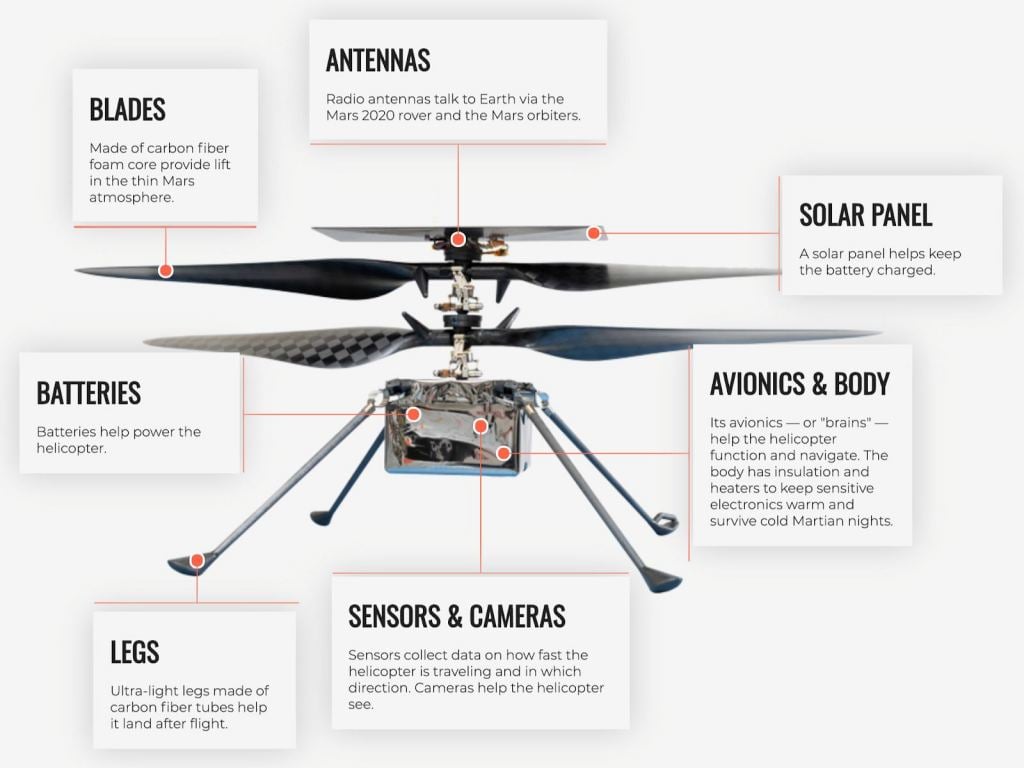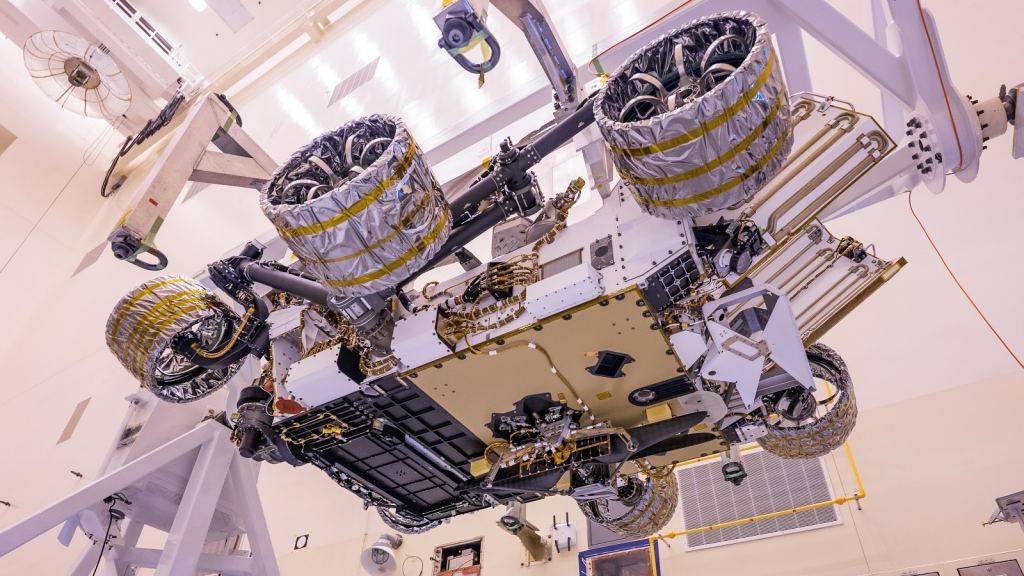When NASA's new Perseverance Martian rover launches in a little over a month it will have a small robotic stow-away on board. Ingenuity is a small helicopter, with a fuselage about the size of a softball and two extending rotors that measure about 4 feet across. It was attached to the bottom of the rover's chassis in April, and NASA recently released details about it's technically challenging release process.
Before the team of NASA and Lockheed Martin engineers started designing the release mechanism though, they had to decide what Ingenuity's mission would actually be. Ultimately, the helicopter will serve as the first powered experimental test flight on any extraterrestrial body. NASA is hoping it will be the first of many, leading to future helicopters on Mars that could allow mission scientists to peer into previously inaccessible places, such as craters and cliffs, from the air. If Ingenuity is successful, it could pave the way to many future air based scientific and scouting missions.
In order to be successful, first Ingenuity must be able to fly. It would have a hard time doing that from the underbelly of a rover that is only 25 inches off the ground. Therefore, a team of engineers from JPL and Lockheed Martin Space developed system to separate Ingenuity from Perseverance known as the Mars Helicopter Delivery System.
The helicopter itself will actually be stored horizontally in the undercarriage of Perseverance. After approximately 60 days after touchdown on the Martian surface in February of 2021, the rover will seek out a flat patch of ground that measures 10m x 10m and doesn't have any obstructions around its edges that would block the rover's view of the helicopter as it takes off. It will then drop the debris shield that protected Ingenuity on the way onto the Martian surface. Next up is a six day wait to confirm effective separation of the shield and nominal helicopter system operation.
Once it has received the go-ahead signal, the Mars Helicopter Delivery system will spring into action - literally. The first step of the multi-stage process is to unlock the mechanism that held the helicopter in place during the entry, descent, and landing phase of the mission. Once the lock is disengaged, a small explosive charge cuts a cable that holds back a spring loaded arm. That arm then begins to lower the helicopter into a vertical position, assisted by a small electric motor. After the helicopter is completely vertical, another small explosive charge will release the two legs that were packed away for storage on the interplanetary flight.
To the designers of the system, the hardest part of the entire release system is the final step - a drop of 5 inches. The 25 inches of clearance Perseverance provides is almost entirely taken up by Ingenuity's 19 in height. That means the final step after it is in vertical position will involve Ingenuity dropping 5 inches straight down onto the Martian surface.
It's not clear what exactly NASA's plan is in case Ingenuity tips over, but it's sure to have one. They could potentially use the robotic arm or even one of the wheels of the rotor to shift the helicopter back into a standing position. Hopefully, Perseverance will simply be able to move away from the upright helicopter and take up an observation position a few hundred feet away from Ingenuity's launch site. Staying within communication range is key to a successful operation, as Ingenuity will use Perseverance's communication platform to transmit data on its flight back to NASA. In another first on a extraterrestrial planet, Ingenuity will use the common IoT communication protocol Zigbee as it's method of transmitting data.
Assuming all goes well, Ingenuity will launch in the first ever powered test flight on another planet. Over the course of its mission, Ingenuity is expected to fly up to 5 times, reaching heights of between 3 and 10 meters and potentially covering 300 meters of terrain in a single flight. The telemetry and other data that it will send back to NASA will be invaluable for assessing the feasibility of powered flight on Mars, and could inform future autonomous missions as well as flights that are directly controlled by future Martian explorers.
That data comes at the end of a long road of development. The helicopter that became Ingenuity was first proposed back in 2014, finally being accepted for flight on the Mars 2020 mission in 2018, with a budget of $23 million. While that funding granted Ingenuity the distinction of being the first flying machine to land on the red planet, there have been numerous other proposed flight tests on Mars, such as ARES and Sky-Sailor. In less than a decade it will also be joined in an alien sky by Dragonfly, a planned helicopter mission to Titan in 2026.
Ingenuity will not have to wait nearly as long for it's day in the sun - it's already bundled into the chassis of Perseverance, ready for it's launch date in the coming months and arrival on Mars on February 18th of 2021. Within a few months of touch down, the Mars Helicopter Delivery System will finally get a chance to showcase all of the engineering that has gone into it. And with even a single successful test flight, Ingenuity itself will mark its name in the annals of human spaceflight.
Read More:
NASA Feature Article: How NASA's Mars Helicopter Will Reach the Red Planet's Surface
NASA: Mars Helicopter Technology Demonstrator
NASA: Mars Helicopter Homepage
 Universe Today
Universe Today


